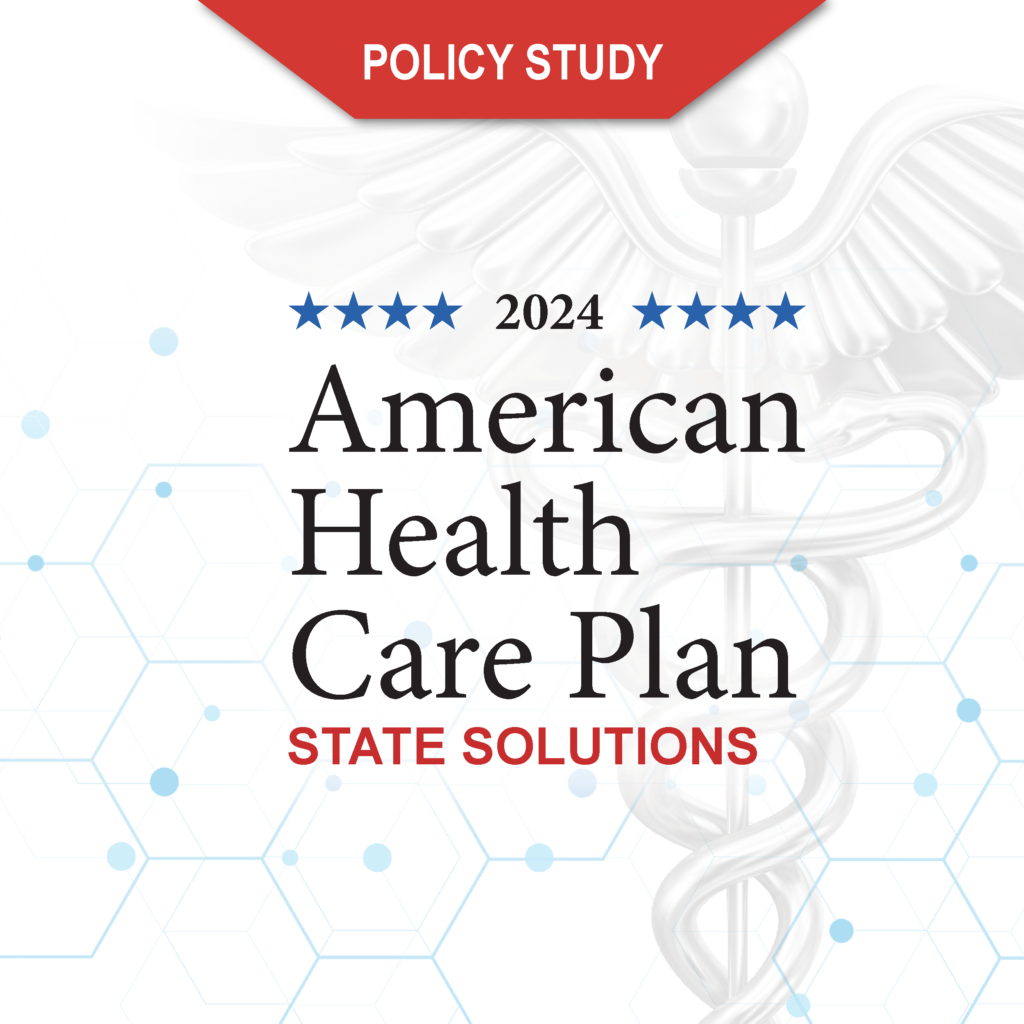In this paper, The Heartland Institute outlines reforms from which all states could benefit, several of which some states have already begun to implement.
In 2021, The Heartland Institute released the American Health Care Plan (AHCP), which focused exclusively on federal reforms to lower health care costs, increase access to high-quality care, and introduce market forces to a health care system that has become overly bureaucratic and too-focused on a one-size-fits-all approach.
Unlike the 2021 version of the AHCP, the 2024 edition emphasizes how states can implement reforms that would accomplish the same goals of lowering health care costs, increasing access to first-rate care, and using market forces to drive a more patient-centered approach.
While we continue to advocate for passage of the national reform plan, the current landscape in Washington, DC makes it difficult to foresee sweeping federal reforms happening anytime in the near future. Of course, the 2024 election could change the current dynamic in the nation’s capital, but that is far from a guarantee.
Meanwhile, there are many things that states can do to make health care more accessible and affordable on the way to a hoped-for federal plan to replace the outdated, overly expensive, access-denying, government-warped health care system.
As the laboratories of democracy, states can provide 50 different solutions for the many challenges we face in realizing the goals of the ACHP, primarily greater access, more patient control, and lower prices for high-quality health care.
State-level reforms are urgently needed even as we await national level reform due to the fact that the federal government has been placing increasing burdens on patients and health care providers. Since 2021, the Biden administration expanded federal government power over health care decisions through ever-tighter regulations under the Affordable Care Act, Medicaid expansion, and various pandemic-era orders.
In this paper, we outline reforms from which all states could benefit, several of which some states have already begun to implement. We suggest a variety of policies states can adopt to empower patients and health care providers, increase access to care, lower prices, raise quality, encourage innovation, and protect individual rights.
Specifically, this paper outlines a series of state-based reforms that seek to reverse elements of federal health care overreach while reinvigorating the role of the states regarding a number of health care issues.
First and foremost, we advise states to address Medicaid expansion, which has resulted in massive amounts of waste, fraud, and abuse.
Second, we call for increasing health care price transparency through the implementation of reference-based pricing.
Third, states should repeal outdated certificate of need laws, which are a remnant of a bygone era and stifle innovation.
Fourth, states should strengthen the provider-patient relationship by protecting providers’ free speech rights and reforming the antiquated system of prior-authorization mandates.
Fifth, we advise states ease restrictions on direct primary care agreements, a patient-friendly subscription-based model of health care.
Sixth, states should expand access to telemedicine so patients can conveniently seek care and medical advice without the hassle of making an in-person appointment.
Seventh, we suggest states expand Right to Try legislation, a commonsense measure that allows terminally ill patients to access medications that have passed Phase One FDA safety trials but are not available on the general market.
Eighth, we call for expanding existing interstate physician compacts in order to resolve the increasing shortage of care providers.
Ninth, we recommend states combat federal overreach by applying for state waivers to unshackle them from burdensome federal regulations while spurring innovative and unique state-based solutions to common health care problems.






